What is Cryptocurrency Mining?
Cryptocurrency mining involves verifying transactions and adding them to a public ledger, known as the blockchain. This process is essential for the creation and exchange of digital currencies.
In the rapidly evolving landscape of cryptocurrency, Pi Network stands out as a revolutionary project designed to democratize access to digital currency through its innovative mobile mining platform. Founded by Stanford graduates Nicolas Kokkalis and Chengdiao Fan and officially launched on March 14, 2019 (Pi Day), Pi Network aims to make cryptocurrency accessible to everyone, allowing users to mine Pi directly from their smartphones.

1. Overview of Pi Network
What is Pi Network?
Pi Network is a cryptocurrency project that enables users to mine digital currency, called Pi, using a user-friendly mobile app. The project seeks to provide a more inclusive and accessible experience for individuals who want to participate in the world of cryptocurrency.
PI NETWORK ROADMAP

Pi Network has a three phase roadmap.
Phase III is split into two parts:
Enclosed Network (current) and Open Network.
Beta: Phase I
In December 2018, Pi publicly listed the mobile app on the major app stores as an alpha prototype that onboarded the initial Pioneers. On Pi Day, March 14, 2019, the original Pi Whitepaper was published, marking the official launch of Pi Network.
Testnet: Phase II
This phase started on March 14, 2020, marking another critical preparation to the transition to a decentralized blockchain—a live Testnet with distributed Nodes from all over the world. Pi Testnet along with the accessible Node software not only enabled the testing of the blockchain but also initiated the decentralized building efforts by the community to create utilities using Test-Pi.
Mainnet
- Phase III: Enclosed mainnet
This period began in December 2021. The Enclosed Network period means that the Mainnet is live but with a firewall that prevents any unwanted external connectivity. Pioneers will be able to take time to KYC and migrate their Pi to the live Mainnet blockchain while the community builds apps and utilities on the Enclosed Mainnet for the network.
- Phase III Open Mainnet
The Open Network period will begin depending on the maturity of the Enclosed Network ecosystem and the progress of the network’s KYC. Open Network means that the firewall in the Enclosed Network period will be removed, allowing any external connectivity, e.g., to other networks, wallets, and anyone who wants to connect to Pi Mainnet.
The Concept of Mining Pi
Mining Pi is as simple as opening the app and tapping a button once every 24 hours. This energy-light mining method does not require expensive hardware or extensive technical knowledge, making it approachable for everyone.
The Vision Behind Pi Network
The vision of Pi Network is to create a cryptocurrency that is widely distributed and utilized by everyday people. By leveraging blockchain technology, Pi aims to empower users to engage in decentralized transactions, fostering a more equitable economic landscape.
2. Founders and Core Team
Who We Are
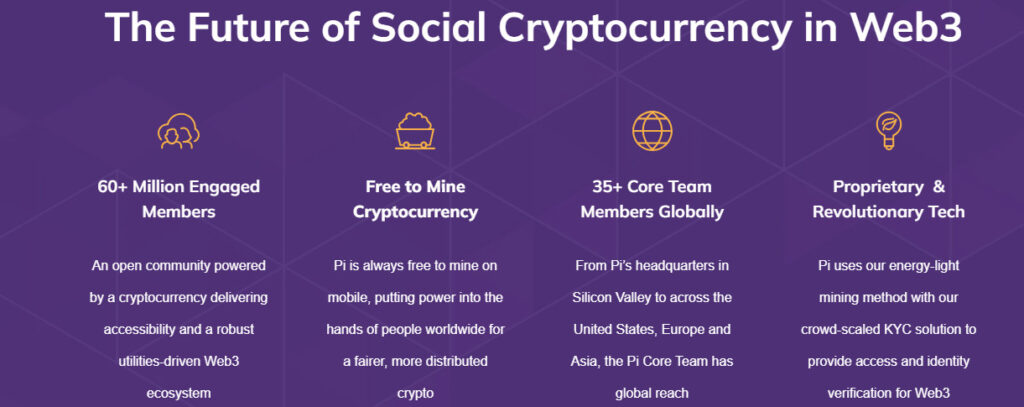
The Pi Founders, Kokkalis and Fan, are driven by a commitment to integrate theoretical knowledge from their Stanford PhDs in computer and social sciences with practical applications in the cryptocurrency space.
About Nicolas Kokkalis
Head of Technology

Dr. Nicolas Kokkalis is a Stanford PhD and instructor of Stanford’s first decentralized applications class, CS359B, in 2018. His work focuses on combining distributed systems and human computer interaction to bring cryptocurrency to everyday people.
He started with a BS and MS in Computer Science, which led him to do a Ph.D. at Stanford University and then continue as a Postdoctoral Scholar in the Computer Science department there. Through and after his PhD work, Nicolas created an early framework for writing “smart contracts” on fault tolerant distributed systems, and multiple human-focused products including online social applications with targeted 100M users and a crowd-powered email assistant.
As a strong and long-term believer of the technical, financial and social potential of cryptocurrencies, he is determined to move them beyond their current limitations and is committed to bringing the power of blockchain to more people. With the founding of Pi Network, he aims to accomplish this by improving the current blockchain experience and empowering everyone to create, build and experience the future of online life through a user-centric design philosophy.
About Chengdiao Fan
Head of Product

Dr. Chengdiao Fan is a Stanford PhD in Anthropological Sciences harnessing social computing to unlock human potential on a global scale.
Chengdiao finished her Ph.D. in Anthropological Sciences from Stanford University, with expertise in human behavior and human groups studies, and her later research interests have focused on human-computer interaction and social computing—specifically, how we use technology to positively impact human behavior and societies.
Her deep understanding about human societies and behavior and those principles—which have been used for previous research projects around productivity software, scaled social communications, and online human relationships and interactions —have influenced her work with Pi Network. With Pi Network, Chengdiao applies those same knowledge and principles to blockchain and decentralization as a real instrument to empower people with more accessible and frequent opportunities for collaboration and utility-building.
By optimizing human-computer interaction and envisioning the future human socioeconomic life through the web, Chengdiao is building Pi Network to mobilize individuals all over the world to participate and be rewarded for their contributions, and establish an inclusive ecosystem for global citizens to unleash and capture their own agency, and in turn create utilities and productions for society and the world.
The Global Pi Core Team
With over 35 core team members located in Silicon Valley and across the globe, Pi Network has a diverse and talented group dedicated to fostering community engagement and driving the project’s mission forward.
3. Key Features of Pi Network
How Pi Network Simplifies Mining
Unlike conventional mining, which often demands significant resources, Pi Network allows users to mine on their smartphones. This simplification opens the door to broader participation in the crypto space.
Free to Mine
Mining Pi is completely free and designed to empower users worldwide. This approach contrasts sharply with traditional mining methods that often require substantial investment in hardware and energy.
Proprietary Technology

Pi Network employs a unique, energy-efficient mining method combined with a crowd-scaled Know Your Customer (KYC) solution, ensuring that users can participate safely and securely.
User-Friendly Interface
The mobile app is designed to be intuitive, allowing users to easily navigate the mining process and engage with the community without any technical barriers.
Community-Driven Ecosystem
The Pi ecosystem thrives on its community of Pioneers, who are rewarded for their contributions. This meritocratic approach encourages active participation and collaboration among users.
5. The Pi Coins
Characteristics of Pi Coins
Pi coins are a decentralized cryptocurrency that powers the Pi Network. They are designed to be accessible and usable in various applications within the ecosystem.
Supply Dynamics
While Pi coins have a limited supply in circulation, the network has not yet established a maximum cap. This flexibility allows for potential growth and adaptation as the ecosystem evolves.
Value Predictions
Currently, Pi coins have an intrinsic value of zero, as they cannot be traded on exchanges. However, predictions suggest a potential future value ranging from USD 314159.
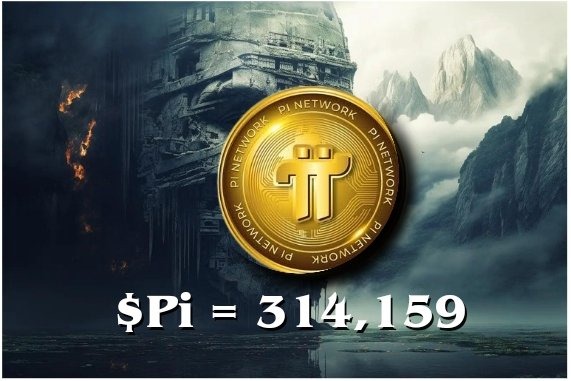
6. Mining Benefits and Accessibility
Democratizing Mining
Pi Network’s model democratizes cryptocurrency mining, allowing anyone with a smartphone to participate. This inclusivity is a key differentiator from traditional mining practices.
No Need for Specialized Hardware
Users do not need expensive mining rigs or technical expertise to mine Pi coins. A simple mobile app is all that’s required, making the entry barrier significantly lower.
Data Privacy Considerations
Joining the Pi Network requires minimal personal information—only a Facebook account or a simple email address. This focus on data privacy is crucial for user trust and participation.
Future Developments and Mainnet Launch
While the mainnet launch has been delayed to the end of 2024, users can look forward to enhanced functionalities and the ability to trade Pi coins freely once the network is fully operational.
8. The Role of Community and Governance
Building a Decentralized Ecosystem
Pi Network empowers its community of Pioneers to actively participate in governance, fostering a decentralized ecosystem where users have a say in the network’s future.
KYC and User Verification
As the network transitions from its test phase, a KYC procedure will be implemented to ensure the legitimacy of miners and safeguard the integrity of the ecosystem.
Empowering Pioneers for Community Governance
By enabling true individuals to mine and govern the network, Pi Network aims to disempower malicious actors and create a secure, community-driven environment.
9. Conclusion: The Future of Pi Network
The Potential Impact on Cryptocurrency Landscape
With its focus on accessibility and community engagement, Pi Network has the potential to significantly influence the cryptocurrency landscape, paving the way for broader adoption and innovative applications.
Read the FAQs & Response on Pi

Is it Pi free money.
Pi is NOT free money. It is a long-term project whose success depends on the collective contributionsof its members. Pi is dedicated to helping everyday people participate in a utilities-based ecosystem on blockchain fueled by a cryptocurrency without the need for traditional intermediaries. If you are looking for quick money, look elsewhere.
What is Pi?
Pi Network is essentially a globally accessible online blockchain ecosystem that makes use of “Pi” – a new cryptocurrency for and by everyday people that you can “mine” on your phone for free with simplicity. Cryptocurrencies are a new form of digital money maintained and secured by a community, instead of by governments or banks. Today, you can mine Pi by making diverse contributions to the ecosystem, namely, helping to secure the blockchain, grow Pi’s trusted network, run a Node, and engage with the Pi app ecosystem. While most cryptocurrencies (like Bitcoin) have been very hard for everyday people to use and access, Pi puts the power of cryptocurrency into the palm of your hand..

Is Pi real? There is some confusing commentary on Pi online.
Pi is a genuine effort by a team of Stanford graduates to give everyday people greater access to cryptocurrency. Pi’s core team is led by a team of early innovators in blockchain and social computing, with PhDs from Stanford University. No one can guarantee that the project will succeed. However, the Core Team is committed to working their hardest along with all Pioneers to make our shared dreams a reality, while maintaining the highest standards of integrity. You can learn more about the “Core Team” on the Team page on the website.
Furthermore, the app is free. You never have to spend fiat money out of your pocket in this app. The app was vetted and approved by Google Play and the Apple App stores. The Google Play store alone shows millions of downloads.
In fact, the network uses a native, decentralized KYC process to identify and verify that the members have only one account and to prevent bots or fake accounts from trying to game the system.
How can the mining of Pi crypto be free? Are you using my phone resources?
Allowing Pioneers to mine Pi cryptocurrency for free is a conscious network choice in service of ensuring accessibility to cryptocurrency to people regardless of their financial background. In fact, 65% of the entire Pi supply will be available for mining by Pioneers for free, which is a substantial share for the community in the blockchain space.
Pi Network does NOT use your phone’s resources – hardware, network, or anything else. The main Pi app and the Pi Browser app uses as much phone battery just as any other regular app. Please refer to the next answer to understand why Pi mining does not consume your phone resources.
How can Pi be mined on mobile phones without energy consumption typically known in “crypto mining”?
Pi achieves this by using a different type of consensus algorithm in its blockchain, rather than the widely known Proof of Work (POW) algorithm that consumes a lot of energy. Pi’s consensus algorithm is adapted from the Stellar Consensus Protocol (SCP) and an algorithm called Federated Byzantine Agreement (FBA), which do not require energy consumption to reach consensus in order to secure a ledger. This type of consensus algorithm requires the nodes to form quorums and exchange messages with each other based on a trust graph composed of individual quorum slices to come to a “consensus” on what the next block should be.
Mining is making contributions to the consensus algorithm to secure the ledger in blockchain for rewards. While POW mining requires nodes to “work” to solve mathematical puzzles to help the algorithm reach consensus and incidentally consume a lot of energy, Pi mining requires a distributed trust graph. The security circles of each individual mobile miners will aggregate into a global trust graph that will feed the consensus algorithm of the Pi blockchain. Therefore, each mobile miner is mining Pi by contributing to the intersectionality, security and feasibility of the consensus algorithm of the Pi blockchain in order to secure the Pi ledger.
While POW miners’ contribution to those blockchains is the energy, Pi mobile miners’ contribution to Pi Blockchain is their trust relationships and the active confirming of such relationships. The heavy lifting of running the consensus algorithm based on the trust graph that the mobile phones are creating is still falling into computer nodes. In fact, the Pi Testnet already has more than 10K such computer nodes that will be soon migrated to the Pi Mainnet, placing Pi into a good path into creating a very decentralized blockchain network.
How do we create and use the Pi Wallet? And can we use an external wallet to hold our Pi in the future?
Pi Network has a native noncustodial Pi Wallet app on the Pi Browser. Create your Wallet by downloading the Pi Browser app from the Google Play Store or iOS App Store and logging into your account on the Browser through your Pi mining app. Then you can access and follow the instructions on the “wallet.pi” page within the Pi Browser. Detailed video instructions on how to create and use a Pi Wallet can be found here.
You are the sole owner of your Wallet’s private key in the form of a passphrase, which is generated locally on your phone and never comes to Pi’s servers. Your public key is also disclosed to you in the wallet creation process, and is supposed to be publicly visible like on any other blockchain. Make sure to store your Wallet passphrase (equivalent to your private key) in a secure location, and don’t share it with anyone else. Due to its noncustodial nature, the Wallet will not be recoverable from Pi Network’s servers. Once you complete KYC and your Pi Transferable Balance is migrated to the Mainnet blockchain, you may lose all of your Wallet’s Pi if you lose this passphrase.
The Pi balance visible on the Pi app (your mobile balance) may not be in the Pi Wallet yet. The mobile balance becomes transferable to your Mainnet Wallet after you pass KYC (identity verification) and complete the Mainnet Checklist in the Pi app. More and more of your mobile balance becomes transferable as your Security Circle members (and at a later stage your Referral Team members) pass KYC. KYC verification makes sure that the Pi you’ve mined along with these bonuses come from verified, real individuals.
In the Enclosed Network period of Mainnet, your Wallet can be used to send or receive Pi peer to peer or through apps within Pi Network’s app ecosystem. In the following Open Network period, external connectivity will be allowed, so the Pi Wallet will be open to holding any types of crypto assets and external wallets can access Pi blockchain.
For more information, refer to the updated Roadmap chapter of the whitepaper draft here.
How does the Pi app work?
The Pi app allows you to mine Pi cryptocurrency by making diverse contributions to the network. The more you contribute, the more Pi you mine. The app is also the home for your Pi account where you can stay tuned on the network updates and interact with fellow members of the Pi community.
To start mining Pi, check in every 24 hours and hit the lightning button. Once you are mining, you can boost your hourly rate by inviting trusted friends and family to join the community. After 3 days of mining, you can boost your mining rate further by building your security circle, which contributes to the overall security of the network. There are additional ways to mine Pi through Pi lockups, app engagement, and Node operations. Please refer here for details.
How do I mine more Pi coins?
Pi Network’s mining mechanism is simple and meritocratic: The more you contribute to the network in diverse ways, the higher your mining rate is. Please refer to the updated chapters of the whitepaper draft released in December 2021 (December Whitepaper) for details.
In addition to mining everyday, you can boost your individual mining rate by doing one or more of the activities below. Keep in mind that the mining stops along with all types of mining rewards when a mining session is no longer active (that is, after the end of a 24-hour mining session and before you start another mining session on the app). Therefore, it’s best to set an app notification to remind you when it is time to start a new mining session.
- Completing your Security Circle to maximize Security Circle rewards. Pi’s consensus algorithm relies on a global trust graph, which is aggregated from the millions of intertwining Security Circles of individual Pioneers. Thus, a Pioneer is given an additional mining boost for each new valid Security Circle connection, up to 5 such connections. Each Security Circle member who remains active adds a boost of 20% of the base rate (up to a maximum of 100%).
- Inviting your friends to mine Pi to increase Referral Team rewards. Inviting more people to join your Referral Team by sending them your invitation code (your Pi username) and mining concurrently as they mine increases your mining rate rewards. Each member who is concurrently active adds a bonus of 25% of the base rate to your hourly mining rewards. There is no limit to the number of members you can add to your Referral Team. This Referral Team rewards recognize Pioneers’ contribution to the growth of the network and the wide distribution of Pi.
- Reminding your existing Referral Team to mine, so that you can maximize the concurrency of your mining together that boosts your mining rate.
- Setting and commiting to a lockup configuration or increasing your current lockup commitment. This helps stabilize the Pi ecosystem with long term engagement.
- Using apps on the Pi Browser directory to increase App Usage rewards. This helps the network create utilities and build the ecosystem.
- Running a Node to increase Node Rewards. The Node Bonus rewards are open to any Pioneer with a computer connected to the internet, and are computed based on the reliability and accessibility of the Node you are running. Node rewards also apply to running nodes on the Testnet. Community nodes can run on the Mainnet during the Open Mainnet period (more information on the whitepaper draft linked above).
Do I need to leave the app open to mine? Does the app drain my battery or data?
You do not need to leave the app open to mine. Pi does not affect your phone’s performance, drain your battery, nor use your network data any more than other regular apps. Once you hit the lightning button that initiates a new mining session and confirms your security circle, you can even close the app and you will continue to mine Pi. However, making diverse contributions to the network, such as using Pi apps, running computer nodes or inviting friends, will boost your mining rate. Any mobile usage of Pi apps will not consume more energy or resources than other regular mobile apps.
So how can you mine a cryptocurrency without draining your battery or data? Instead of burning energy, as proof of work cryptocurrencies like Bitcoin do, Pi secures its ledger when members vouch for each other as trustworthy. For more information, please refer to another FAQ – How can Pi be mined on mobile phones without energy consumption typically known in “crypto mining”?
Why was the mining rate higher in the past?
Earlier members mined at a higher rate to reward their contributions to and leap of faith in the network when the network was small and young. Pi aims to be the world’s most widely used and distributed cryptocurrency. To achieve that goal, Pi needed to bootstrap its network in the beginning, and therefore, incentivized its earliest members to make contributions that would set it on a path to success (e.g., securing and growing the network). The Pre-Mainnet mining mechanism began at 3.14 Pi/h and halved whenever the network increased in size by a factor of 10x without a definite max supply, starting at 1,000 Engaged Pioneers. This occurred five times before the Mainnet Phase launched on December 28, 2021 when a new mining mechanism along with a clear supply model was introduced.
Starting March 1, 2022, the declining rewards issuance formula based on the supply model took effect, adjusting the systemwide base mining rate based on a monthly supply limit defined by the formula and replacing the milestone-based halving explained above. Generally, the mining rate declines month over month due to the limit of supply, the growing network size and Pioneer mining activity. This formula helps ensure that Pioneer mining rewards are within the total supply limit of 65 billion allocated for mining rewards as announced in the new chapters of the whitepaper drafts released in December 2021. This declining rewards issuance formula along with the new mining mechanism (which went into effect on March 14, 2022) balances the network’s need for growth, accessibility, longevity, and scarcity. Additionally, it right-sizes the Pioneers’ rewards for contribution to the network.
Why is the Pi Referral Team program NOT multi-level marketing?
It is not exploitative of the newer members being referred because the Referral Team mining bonus is an equal split between referrer and referee, i.e. both of them mine the same 25% bonus when both are concurrently mining.
There is no fiat money involved in the referral program. New members do not have to pay the referrer any money or pay the project any money to join. Pi is free to be mined by anyone.
The referral bonus only applies to 1 level of referral relationship. This means that the referral-grandchild’s behavior doesn’t affect at all the mining of referral-grandparents.
What is the utility of Pi?
Pi’s utility will be backed by the time, attention, goods, and services offered by other members of the network in exchange for Pi. By pooling our attention, goods and services around a common currency, Pi’s members are building the network together. Because this is a network supported by blockchain technology, the network can help its members reduce their costs and prevent slippage that typically goes to banks, technology giants (e.g., Facebook, Amazon) and other intermediaries. Today, we are laying the infrastructure for this digital currency and for a utilities-driven app ecosystem by distributing the currency, building the community, developing the technology to ensure its security and designing new types of online social experience.
How can I use my Pi on the Mainnet?
Pi Network is building a peer-to-peer ecosystem including marketplaces where our members will be able to directly spend Pi to buy goods and services. Once Pioneers are able to pass KYC verification and migrate their mobile Pi balance to Mainnet, this option will be available. When Pi apps transition from Testnet to Mainnet, this option will be scaled and diversified across the ecosystem. Pi Mainnet Enclosed Period restricts the use of Pi to such scenarios in the enclosed environment where the Mainnet blockchain is guarded by a firewall that prevents any external connectivities. Refer to the whitepaper draft here for the reasoning and importance of the Enclosed Network period.
In the Open Network period of the Mainnet phase, Pi Mainnet Blockchain’s firewall will be removed, where external apps and organizations will be able to connect and transact with the Pi Mainnet blockchain. For more information, refer to the updated Roadmap chapter of the whitepaper draft here.
What is the Ambassador role? How does the Referral Team work?
Pi Network Ambassadors are Pioneers who help grow the network and distribute Pi cryptocurrency widely by referring other people to join the network as Pioneers.
Accessibility is a core value of Pi, and Pi’s vision is to build the world’s most inclusive peer-to-peer ecosystem and online experience, fueled by Pi, the world’s most widely distributed cryptocurrency. Therefore, anyone who contributes to network growth and Pi distribution by introducing others into the Pi Network will receive Pi rewards in the form of higher mining rate.
You become an Ambassador when new members join your Referral Team by using your invitation code (also your Pi username) when they sign up for Pi Network. You earn a 25% bonus on your base mining rate for each person you invite to the network and is mining concurrently with you at a given point in time. There is no limit to the number of new Pioneers you can invite, and therefore, no limit to Referral team rewards. A new member can only be added to one inviter’s Referral Team, because each member only joins Pi once using one inviter’s invitation code, but each member then can create their own referral team with new members. In other words, unlike the Security Circles where people can be added into multiple members’ circles based on trust, Referral Teams are fixed based on who invited whom. Each invitee in the world can only be claimed by one inviter. 20
There are four roles for Pioneers in the Pi ecosystem: Pioneer, Contributor, Ambassador, and Node. To view your roles, first tap the ≡ icon in the top left of the mining app. Then, tap “Roles.
What are Pi Security Circles and the Security Circle Mining Reward? What is, and how do I become a Pi Contributor?
Security Circles are groups of trusted people built by each Pioneer. You can add as many trusted Pioneers as you can to your Security Circle. Your Security Circle mining reward increases for each new Pioneer added to your Security Circle, but caps at 5 members. This means that each member of your Security Circle gives you a 20% bonus (up to a 100% maximum) on your base mining rate as long as they remain active. The Security Circles are so central to the security of the Pi blockchain (as explained below) that the Security Circle reward raises the individual Pioneer mining rate by itself as well as by boosting any Referral Team, nodes, or app usage reward that applies to the Pioneer.
Pi Network Contributors are Pioneers who contribute to the network’s security by adding other trusted Pioneers to their Security Circles. In aggregate, these Security Circles help build a global trust graph that is used by the Pi consensus algorithm to secure the Pi blockchain. In other words, when Pioneers point to other Pioneers they trust, then it helps create a trusted social network that the Pi Nodes running the Pi blockchain can rely on to secure the blockchain. For this reason, it is important that you only add Pioneers to the security circle whom you personally trust.
Pi’s Contributor role becomes unlocked after you’ve finished 3 mining sessions as a Pioneer. After 3 days of mining, you will see a new icon of the security circle on the home screen of the app which you can click to start.
There are four roles for Pioneers in the Pi ecosystem: Pioneer, Contributor, Ambassador, and Node. To view your roles, first tap the ≡ icon in the top left of the mining app. Then, tap “Roles.”
Can I transfer my Pi? What is the timeline for transferring Pi?
The network went through three major phases: Bootstrap (3/14,2019 – 3/14,2020), Testnet (3/14,2020 – 12/28,2021) and Mainnet (12/28,2021 – the Present). During the first two phases, transfer of Pi was generally not available across the whole network. In the Mainnet phase composed of two periods—Enclosed and Open Network periods— mainnet migration and transferability became available for individual Pioneers based on the following procedures.
Unverified and unmigrated Pi in the mobile mining app is not transferable. Once you pass identity verification through the KYC (Know Your Customer) process in the Pi KYC app, and thus show that you are who you say you are (which prevents bad actors from accumulating Pi from unverified accounts), you can migrate your mobile-mined Pi balance onto the Mainnet blockchain. Once your Pi balance is migrated to Mainnet, you can send or receive your Pi to and from other Pioneers or to and from a Pi app in return for their goods or services. For how you can use your Mainnet Pi on the Pi ecosystem, see here.
Can I mine from more than one device? How does Pi Network prevent fake accounts, bots, etc. from mining Pi?
No, you cannot mine from more than one device. Pioneers are only allowed one Pi account per person.
Pi uses a multi-pronged strategy to safeguard against fake accounts and bots. First, the network uses a combination of third party checks (e.g., recaptcha) and natively developed machine learning algorithms to identify bots. Such checks are usually invisible to most Pioneers.
Second, Security Circles, which are integral to the functioning of Pi’s consensus algorithm, also make it easy to detect fake accounts. Fake accounts will not have enough real people pointing at them via Security Circles. At best, fake accounts would be pointing at each other with very few incoming pointers from the rest of the network. This anomaly is easy to detect with computer algorithms.
Third, Pi’s native, decentralized KYC solution helps validate the identity of Pioneers before they are eligible to migrate their mined mobile Pi balance onto the Mainnet blockchain. In other words, only accounts validated as belonging to distinct real individuals will be honored on the Mainnet blockchain. KYC also acts as a final system check against bots and fake accounts. That is, even if all other methods missed out on some “bot” accounts, this Pioneer validation process will further eliminate them because bot owners will not be able to prove bots to be real people with real names and government-issued identity cards.
Are there countries or regions restricted from accessing Pi?
Yes. Pi Network’s vision is to build an inclusive peer-to-peer ecosystem and online experience, fueled by the Pi cryptocurrency.
Therefore, Pi Network is making a personal communications service available to all Pioneers where permitted under applicable laws and regulations. Additionally, Pi Network is providing cryptocurrency transactions to all Pioneers where permitted. Please keep in mind that these laws and regulations change frequently due to changes in technology, policy and political events. For additional information, you may wish to visit the Office of Foreign Assets Control Regulations’ website.



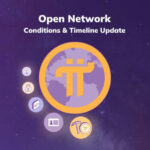

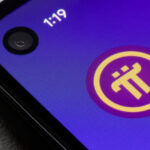
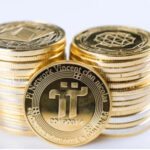
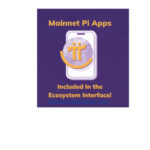



Awesome! Its genuinely remarkable post, I have got much clear idea regarding from this post